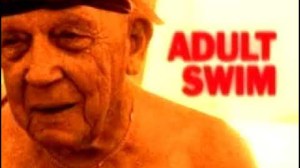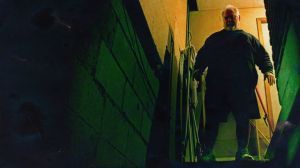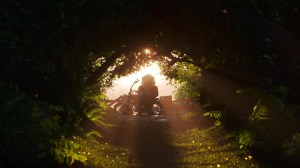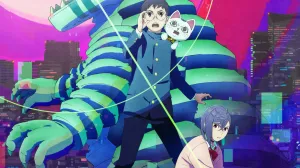
Following the events of DC’s Convergence crossover, the pre-Flashpoint version of Superman returned to the main publishing line, bringing his wife and then-newborn son with him.
Videos by ComicBook.com
That was ten years ago in-story, per a conversation we had with Dan Jurgens at the start of Superman: Lois and Clark, the series that brought us a bearded Superman, his wife and their now-ten-year-old son Jonathan, all hiding out in California while Clark performed super-feats in secret while wearing a black-and-white costume.
There was much excitement when Superman: Lois and Clark was announced, but…how did it fare? Reviewing a single-issue comic book is often fairly fruitless, as looking at the writing provides you with only a snapshot of the big picture and what starts out great can often run out of gas by the end, whereas some series start out slow and build to something amazing.
As such, and with the Lois and Clark Superman now inhabiting Action Comics as written by Jurgens, we figured it would be worthwhile to take a bit of a longer view and look at the series both as a whole and in its individual pieces…!
ARRIVAL, PART 1

The series opened with high expecations, a lot of buzz, and an unenviable task ahead of it.
This Superman, the one starring in the book, was both the “classic” Superman that everybody knew…and kind of not, since his new origin was that he was transplanted from a world that had died in the 2011 DC reboot after Flashpoint.
That meant that they had to not only establish his relationship with Lois and Jon — and, by the way, give Jon a personality since we had last seen him as a newborn — but also explain the elaborate backstory of DC’s continuity-altering Crises in a way that new readers could breeze past and not get completely bogged down by.
That was accomplished in an exposition-heavy two-page spread (pictured above), in which Jurgens ably scripted the Cliff’s Notes version of DC’s recent history-altering events but more importantly some gorgeous and expressive art by Lee Weeks made the whole thing feel like a fast-paced, exciting journey rather than some off-panel, hand-of-God storytelling at the end of Convergence.
The result was surprisingly effective, and the issue — held together by the relationship between Lois and Clark, their love for their child, and the fact that Jonathan quickly revealed himself to be both more than meets the eye and less obnoxious than the average super-son — was a great introduction.
Some critics bemoaned the idea that the series would require more DC expertise than they’d like to understand, but frankly I believe that to be “experts” mistaking their knowledge for necessary information. Everything you needed to know about both the pre-Flashpoint world, and Hank Henshaw — a character created by Jurgens who would turn out to be essential to the Lois and Clark plot — was given to you on the page.
The first issue, more than any other, was also a treasure trove of Easter eggs that rewarded those fans who had been missing “their” Superman since the New 52 took over. Everything from Lois and Clark’s street address to the scrapbook Lois was keeping for Jonathan called back to pre-Flashpoint DC stories, and while you didn’t need to know any of that stuff to enjoy the book, it enriched the experience in exactly the way you hope Easter eggs will.
EAT IT, CHICAGO

The second issue was where artist Lee Weeks shone perhaps more than anyplace until the final issue of the series.
First off, his take on the younger Jon White (Lois and Clark took the name of their father figure Perry White, rather than either of their real last names, when they came to the new world) was really well-done. Again, it’s uncommon for either writers or artists to really “get” kids in superhero comics, and both Jurgens and Weeks nailed it in Lois and Clark.
If the first issue set the stage for the characters’ existence in the DC Universe and Clark’s superhero career, the second issue established everything else. We met a few supporting cast members, got a sense for how Clark did his superheroing, and established some important subplots that would inform the rest of the series, most essentially the “Author X”/Intergang plot.
It also successfully distinguished itself from other superhero stories here, focusing heavily on the secrecy of Lois and Clark’s life and dealing with how they had managed to stay so well-hidden for so long.
Lastly, Weeks delivered some killer action sequences, be it Superman battling Shockwave or Lois and Jon being pursued by Intergang assassins. He also did a better job (as seen above) at making a Superman who wears jeans look good, imposing, and heroic than they had been managing in the New 52 Superman titles around this same time.
ENTER BLANQUE

The third issue of the series opens on a harrowing sequence, tonally much darker than anything we had seen to that point. It introduced a character whose attitude was brutal and whose design sense evoked a Vertigo character — Blanque, a villain who would go on to recur throughout the series.
The stark white of Blanque’s appearance played off the bearded, black-suited Superman and underscored tonal and personality differences between the two men. The horrors of Blanque’s attack on Rusty Ridge forced Clark to operate more or less in public, demonstrating for the first time that this was a Superman so committed to saving lives and bringing the villain to justice that he would risk the thing most precious to him to do it.
That isn’t surprising, of course, to anybody who has read Jurgens’s Superman run — which, if you’ll remember, featured a younger version of this Superman. Nevertheless, nobility for nobility’s sake and doing the right thing because it’s the right thing is not a particularly common motivation/origin anymore in a superhero landscape where even classic characters have to be reinvented to give them tragic backstories. Here, the nature of Superman was challenged by a being of nearly pure evil and a truly incredible amount of power — and Superman came out the other side with the moral high ground.
I don’t have a problem with Man of Steel and the death of Zod — and in fact it didn’t particularly bother me when John Byrne did it, although I agree with Jurgens that the movie actually handled it better than the comics did. That said, the grounded realism of Man of Steel can serve as a stark counterpoint when you see Superman spare an enemy who seemingly “needs” or really deserves to die. That’s what happened here, and I think it says a lot about who this Superman is.
A ton of credit also goes to Weeks for his brilliant redesign of the Fortress of Solitude. Incorporating elements from the past along with new concepts, new designs, and a fair amount of mystery, the story managed to make the Fortress an exciting and interesting locale where you’d like to spend more time. Too often, it is reduced to being just “Superman’s office,” where sometimes cool stuff happens, and in this series it was a palace of wonders.
HENSHAW AND BLANQUE

When the series started, it featured a cool, iconic cover that will look great on a collected edition.
if there’s a single cover image I’d like to see echoed on the back, it’s this one. A creepy, ominous image that projects Henshaw as a serious threat and showcases the way Weeks’s art makes people’s faces and bodies far more distinct than many comics artists do, the cover to #4 was a stand-out image even in the context of a series full of epic art moments.
That’s good, because the interiors were a bit weaker.
In hindsight, it’s clear why this book couldn’t be allowed to run late in order to accommodate having Weeks draw everything, but as a stand-alone piece that will be collected in a single volume, it’s too bad he couldn’t. That isn’t to say that thosethey brought in weren’t capable artists — but there were a lot of cooks in a kitchen which, up to now, had had only one master chef, and sometimes it left your palate a bit disappointed.
From a writing standpoint, this is actually one of the stronger issues. We get great character beats both in the present day and in a flashback sequence to Lois and Clark’s first trip to Metropolis — including some references and moments that might play into Jurgens’s Action Comics in the future. We get great cliffhangers on both Superman’s A-plot and Lois and Jon’s B-plot, leaving fans wondering what the heck was going on in both stories. And we get A real sense of direction from both the Blanque/Henshaw story and the Intergang story, while starting to really circle where the third, “master” villain was going.
That said, the art really left me cold here. Weeks’s contributions are gorgeous, and Marco Santucci’s work on the Lois and Jon sequences were really well-done and perfectly paced. The weakness came when Santucci had to take on Superman, and the Superman/Blanque fight — one of the most widescreen battles in the book — felt decidedly less epic than some of the comparably more minor fights we’d seen Weeks blow the barn doors off of in the first three issues.
The fight between Superman and Blanque, as drawn by Santucci, is likely the artistic low point of the series, and while it wasn’t awful, it was jarringly different from Weeks’s art, which will look strange in a collection and certainly merits mention in a big-picture review like this one.
BATMAN

While Superman: Lois and Clark #4 suffered from pairing series artist Weeks up with a fill-in whose style badly clashed with his own, #5 saw a full-issue fill-in from Neil Edwards — and while Weeks’s art was missed (and his cover was amazing), Edwards ably filled in the gap.
Managing to walk a stylistic line between Santucci and Weeks, Edwards’s contribution not only looked good on its own but may help tie the collected edition together visually.
The Batman material early in the issue was particularly strong, as Edwards works nicely with the figurework and the use of the Dark Knight’s cape creates a sense of fluidity and motion. That’s arguably the place where Santucci struggled the most, was creating dynamic and visually interesting fights without use of Superman’s cape. Edwards does so much better, and his continuation of that epic fight in the Fortress of Solitude doubles down on what Santucci had established and realizes the potential in Jurgens’s script.
I also, as somebody who’s been reading Superman comics for almost 25 years and finds I often don’t, really enjoyed the way Edwards and colorist Jeromy Cox depicted heat vision (seen above).
Would I have enjoyed Santucci’s art more if it had been in its own issue and not juxtaposed with Weeks? Maybe, but I’d say Edwards is a better fit for this take on Superman.
As far as the story for #5, it got the obligatory Batman v Superman-themed crossover out of the way in a cool, creative way and then it was all-action, all-the-time.
The fight between Superman, Henshaw and Blanque took up a lot of real estate, as did establishing the supervillain reality show that would play a key role in a later issue. Lastly, this is where the Jon-getting-suspicious thing really heated up. It played out really nicely, and while almost everything in the middle was action, it was well-drawn action and the bookend scenes between Lois and Clark, each dealing in a different way with the Superman t-shirt the pair bought for their son, worked really well.
EVERYTHING HITS THE FAN

In Superman: Lois and Clark #6, basically every major storyline comes to a serious head. We finally meet Hyanthis, who presents herself as the villain who’s been terrorizing the universe looking for the stone Henshaw used against Blanque last time. Intergang kidnaps Lois and Jon, now aware of who she is as Author X, and Clark is very nearly exposed as his attempt to stop a supervillain is caught on camera.
A lot had to happen in the issue, and most of it is shown instead of told. That’s good, solid storytelling, but it put a lot of work on Lee Weeks, who knocks it out of the park. This might be his strongest issue, all around, from a storytelling perspective.
Who really deserves credit in #6 is Jeromy Cox. The series had its own color palette that was a kind of a half-shade different from most of what you see in superhero comics for its whole run, but this week between the colors and the effects (especially as it pertained to Clark’s use of his super-hearing), he absolutely elevated the art.
The two combine for some really expressive faces and really well-done intimate scenes, especially with Lois and Jon, as Weeks’s facial expressions are informed by the color scheme in the room.
THINGS TO COME

As we discover Jonathan White has super powers, the final battle of Superman: Lois and Clark is set up.
The seventh issue might be the slowest and least dynamic of the series, having a lot to accomplish and not a ton of space to accomplish it in. Neither the writing nor the art handle it quite as well as in #1, although that isn’t to say it’s a bad comic.
One of the hard things about being one of the best comics on the stands is that you can still be one of the best while also being the weak link in your own story.
Steven Segovia drew most of #7, and while he’s not quite as solid on the characters as Lee Weeks is, he’s got a pretty good take — and one that we’ll be seeing more of, as he’s one of the artists on Jurgens’s Action Comics run.
I’ve liked Segovia — particularly the way he does fights and the way his characters always look alive and in motion — since Convergence, so i was pleased to see him here and will be pleased to see him platooning with Patrick Zircher — whose Superman to me feels like a natural extention of Lee Weeks’s — in Action Comics. A few of his faces are particularly wonky in this issue, and hopefully he fine tunes those a little bit for Action.
There’s a lot of exposition, a lot of dialogue, and in some cases, it feels like it’s just treading water. The payoff in #8 for Jon’s story, for instance, is great, but it feels a little off that we don’t get a real parent/child conversation about his powers and origins yet.
That said, the characterizaiton is always on point, which allows me to overlook some minor writing flubs that were almost certainly done because the story had to be the length it was.
THE BEGINNING…

This didn’t have the trite “The Beginning…” tag at the end of the story, but it could very well have justified it.
Weeks was back on art, and he absolutely demolished this script. There was so much great character work in both Jurgens’s writing and Weeks’s art in the final issue that it’s hard to pick a favorite page, sequence or image…although if pressed, the cover itself is just gorgeous. It’s a piece I would love to own, if not for the fact that Weeks’s work is way out of my price range for sequentials, let alone a cover.
All that said, the Superman part of the story wraps up in a bit of a rush. The final battle with Hyanthis is a bit of a letdown as there’s some fantastic fighting going on when she decides that she’s not going to win, and that she will bail and come back later. Strategically, it’s sound for both the character and for Jurgens, who can deal with her at more length in Action Comics down the road, but it’s slightly disappointing that we didn’t get more resolution on the whole Oblivion Stone thing.
The important thing, though, is where the series actually ends. We get a great sequence of Lois, Clark, and Jon talking about his powers, his origin, and the future…with a nod to the past in the form of Clark giving Jon the cape he wore before he lost his powers pre-Convergence.
The thing about that? The post-Crisis/pre-Flashpoint Superman’s capes weren’t Kryptonian baby blankets; they were made for him by Martha Kent, making that cape an incredibly precious family heirloom. The symbolic importance of that scene reverberates for years, and it’s beautifully executed by Jurgens and gorgeously rendered by Weeks. Looking at #1 and #8, you wonder why anybody — even the really strong fill-ins — were allowed to push Weeks out. In spite of having so few of the trappings of the character, Weeks turns in a definitive Superman here.
SUMMATION

Honestly, Superman: Lois and Clark is arguably the best stand-alone Superman story of the 21st Century, and deserves a place on your bookshelf next to some of the Man of Steel’s greatest adventures.
Weeks turns in a run where the only flaw was that he was unable — presumably for time reasons — to draw every page. It was a treat for old readers and new, and Superman: Lois and Clark reminded us why Superman is one of the greatest characters in all of fiction — even when he’s stripped of so much of his familiar trappings.
Jurgens knows this character — these characters — better than almost anyone, and it shows in Lois and Clark. The series could easily have felt dispoable, “extra,” or like an editorial mandate to put the pre-Flashpoint Superman back on the board and little else. Instead, it feels like the best kind of Elseworlds/imaginary story, but with the added bonus that the character gets to come back into the continuity and continue from here.
Now that Jurgens’s first issue of Action Comics is available for sale, and this character has shaved, suited up, and become the Superman again, it’s surprisingly easy to just slip into calling him “Superman” instead of “the pre-Flashpoint Superman” or “the post-Crisis Superman.”
That’s not something that happened overnight during Superman’s handful of pages in Peter Tomasi’s herculean “The Final Days of Superman” or his excellent Superman: Rebirth #1. It was Dan Jurgens, Lee Weeks, and the rest of the Superman: Lois and Clark creative team who put comics’s most classic car back on the road and made its engine purr.








